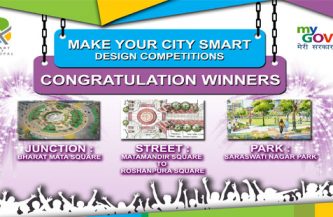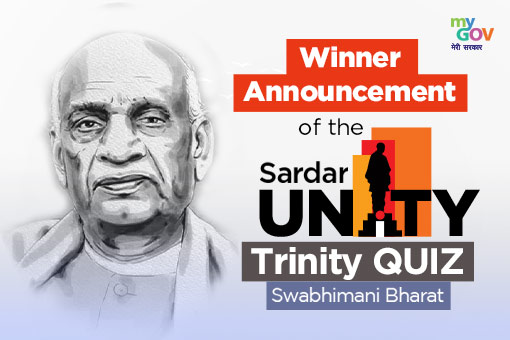Citizens Consultation for the Smart Cities Mission

On 25 June 2015, Prime Minister Shri Narendra Modi launched the Smart Cities Mission to enable the holistic development of Indian cities. This bold new initiative under the Ministry of Urban Development (MoUD) aims to drive economic growth and improve the quality of life of people by enabling local development and harnessing technology as a means to create smart outcomes for citizens. According to MoUD, the core elements of a Smart City include: adequate water and electricity supply, suitable sanitation and solid waste management, efficient public transportation, affordable housing, robust IT connectivity and digitalization, e-governance with citizen participation, sustainable environment, and safety and security of citizens with health and education for all. These objectives are proposed to be attained through a judicious mix of retrofitting, redevelopment and greenfield development.
Citizen consultation is an important pillar of the first phase of the Smart Cities Mission. The Ministry encouraged local governments to engage citizens as they worked on their city’s Smart City Proposal, and recommended MyGov as the core platform for citizen consultation. Municipal governments supplemented their online MyGov activities with meetings, discussions, and other public interactions in their respective cities.
MyGov facilitated citizen consultation for the Smart Cities Mission in two stages. During the first round, it offered cities a range of citizen consultation methodologies, such as discussion forums, tasks, online polls, public talks, and blogs. These tools served as a catalyst for citizens to participate in the Smart Cities Mission and the competition, also known as the India Smart Cities Challenge, and offer suggestions for the development of their city.


During the second round of the Smart Cities Mission, municipal authorities from the shortlisted cities used MyGov to collect suggestions from citizens on their vision for a Smart City to incorporate these into draft proposals. Of the 98 cities, 57 put the draft proposals online for further comments and inputs from the public. Overall, the proposals received a total of 1,42,895 comments.
The 98 cities adopted a range of measures to encourage citizen engagement. Municipalities reached out to young citizens by visiting schools and colleges to educate them about the Mission. Municipal corporations used popular social networking platforms like Facebook and Twitter to spread awareness about the mission. Still others created dedicated websites with detailed updates on progress. SMS campaigns, voice message campaigns, and airtime on radio channels helped expand a municipality’s reach. Many cities even created free Wi-Fi hotspots in crowded areas so that people could access Internet and submit suggestions. Advertisements in newspapers, pamphlets, hoardings, and the MyGov app played a significant role in making the Smart City Mission a nationwide phenomenon.
The Smart Cities Mission – MyGov collaboration is an unprecedented exercise in urban planning, which has transformed planning from a top-down centralized activity into a democratic consultative process, taking the citizens’ perspective as the foundation stone on which the city plan is built. MyGov looks forward to partnering with more cities and citizens in the subsequent rounds of the Smart Cities Mission play its part in developing Smart Cities across India.
– Gaurav Dwivedi,
CEO, MyGov
Total Comments - 158
Leave a Reply
You must be logged in to post a comment.





 Login
Login
1. All those so called it , instruments experts can build the information system based keos on he roads with centralised control room for traffic, parking places, hospitals, traffic congestion in some areas with led display or even like a score board. 2. Same it experts and instrumentation experts , the students can develop and design robotic underground pipe lines -water, sewage, gas, electrical cables, SCADA SYSTEM, – thru a mobile area wise or thru a cable net work in a centralised control
Sir, Here are few suggestions which can be easily implemented without even waiting for the CENTRAL GOVT HELP, BY ALL THE METRO AND SUB-METRO, SMALL CITIES.
WITHOUT ANY ADDITIONAL COST TO BEGIN WITH SOME OF THE FEW SUGGESTIONS.
it is only this PM who has such vision and innovative thinking giving concept of CLEAN BHARAT AND SWACHH BHARAT.
Smart city tabhi possible hai India ma agar sabhi log mil ka iss kaam ma apna apna sahyog da agar hamari govt caha too India ma 29 state hai jis ma 1000 sa v Jada city hai har city ma MLA or municipal officer hota hai agar govt uuna or logo ko duty DA ki oo sab mil ka apna apna city ko clean kara or Jo city aacha kaam karta hai uuna rank DA or Jo log ya offlicer een ma help karta hai uuna prize da or eek rank table sa banaya jis aacha city upper rahaga or iss sa har ko e apna duty pura karaga .
Smart cities is a great initiative. Execution is going to be key amidst the various bottlenecks. Transparency in execution is very critical. There needs to be a system for Citizens’ visibility on the status of progress of the initiative along with the milestones achieved.
There should be a Cap limit in cost of housing rates in smart cities.
Affordable housing should be agenda of the government.
Local Rail network should be planned and implemented as a first step towards making a smart city.
Development of Public transport will help control pollution in cities.
Dear Editor,Though I missed deadline, i have a worthy Water Conservation Idea ref #Smartcities. Normally Toilet flushes drain more water. Plz force toilet manufacturers to do research about highly water efficient toilets, issue Star ratings as in Energy gadgets & Fuel ratings in Vehicles Govt may even consider tax sops. We wld save billions of gallons of water annually.
As regards the coastal cities which would be prone for flooding due to rise in sea level or possible tsunami or excessive flooding, please ask the relevant department to take the Netherlands technology of building dykes as they have it in areas including below sea level and also high capacity pumps with various capacities for pumping out water in low lying areas of fields etc.
Please think about smart protection, relief and rescue operation also for the smart cities located on river banks and along the Himalayas which fall in V category for earthquake including Delhi as Climate Change has begun globally. Cities on faults are also susceptible for earthquakes. For Buildings in these cities, please make it compulsory to have Japanese Standards for protection of the buildings. Our Bureau of Indian Standards do not have complete standards.This may be taken on priority pls
For smart cities it is better to explore new areas,new villages provide infrastructure instead of destroying houses,markets which are placed nearby roads,railway lines of existing cities like Mumbai,Thane and especially Kalyan.Government is wasting lot of money in destroying,breaking buildings,tenants to expand exiting roads,rail lines.Spending almost three times cost more and wasting lot of time.Government can connect and provide lot of remote cities,villages.Growth with a smile on face…IMP